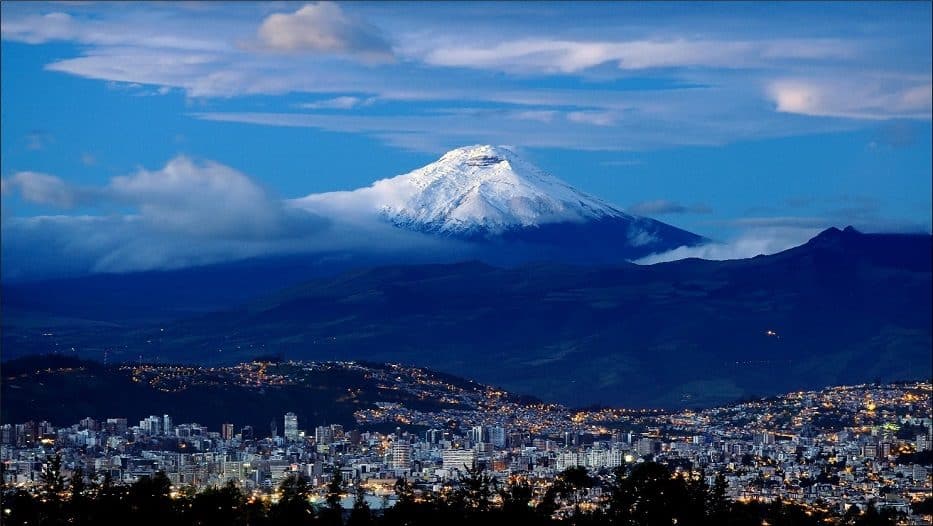Julia Maria Gomez de Avila Segade | 29/08/2023
Ecuador continues on the path to economic recovery following the impact of trade restrictions resulting from the pandemic. Its strategic position as an oil producer and exporter is key to understanding the region’s development.
Ecuador’s economic stability was severely affected in 2020, following the sharp drop in the price of crude oil ($25.75 per barrel, compared to the price of $51.30 per barrel projected in the state budget). As reflected in the latest report published by ICEX, this impact, together with other economic consequences resulting from the pandemic, caused a drop in GDP of 7.8%. According to the International Monetary Fund, previous estimates pointed to a rise of 0.2% and a change in the inflation rate from 0.3% in 2019 to –0.3% in 2020. In April 2022, Ecuador’s cumulative inflation was already at 3.2%. By the end of 2023, inflation is expected to be 2.4%.
One of the region’s main strengths lies in its foreign sector, as it has maintained a surplus trend in transactions, even in the complicated situation of 2020. That year ended with significant drops in both imports (–21.2%) and exports (–8.8%). The latter were kept afloat thanks to products such as bananas, shrimp, canned tuna, and cocoa. Oil exports suffered a 40% drop. The positive trade balance has been maintained in subsequent years.
The current government of Guillermo Lasso, which began its administration in May 2021, has announced significant investment in strategic sectors such as renewable energies, mining, and hydrocarbons, although many projects have not materialized yet.
Transformation and Development in Ecuador
In recent years, the region has taken on the challenge of transforming its energy matrix and production model, as well as promoting the tourism industry.
• Energy transformation: Following the construction of eight large power plants, three of which are already in operation, 92% of Ecuador’s energy comes from hydroelectric power. The consumption of thermal energy, which is much more costly and polluting, has been considerably reduced. A large number of renewable generation projects are currently underway, which the government will promote with a combination of public-private investments.
• Productive transformation: The aim is to increase the added value of local production, which is currently limited to the primary sector. In 2022, it accounted for 81.2% of exports, while industrialized products accounted for only 18.8%. To monitor this progress, the Ministry of Production, Foreign Trade, Investment, and Fisheries has implemented a national registration system. As a result, a catalog of local providers will be created with quantitative and qualitative information on the producers working within the territory.
• Tourism: Despite its potential, Ecuador has not yet managed to exploit its geographic diversity, which features Andean peaks, extensive beaches, and Amazonian jungles, as well as the Galápagos Islands, which were declared a World Heritage Site along with Quito. Currently, it only contributes 2.2% of the region’s GDP. To improve the figures, the Ministry of Tourism, with Niels Olsen at the helm, has just launched an ambitious campaign with the slogan “Time to reset in Ecuador” to attract visitors from the United States, Canada, Great Britain, Germany, and Spain.
Investment Opportunities in Ecuador
Foreign Direct Investment (FDI) in Ecuador is small in absolute terms. According to data from the European Central Bank (ECB), 2021 closed at $647.3 million (40.84% less than in 2020, due to disinvestment resulting from the pandemic). However, these figures turned around in 2022 when, in data published by the region’s government, FDI reached a value of $788 million, representing an increase of 21.7% compared to the previous fiscal year.
The main target sectors were business services (80.9%), trade (6.8%), agriculture, forestry, livestock, and fishing (6.1%), and manufacturing (3.7%). The largest economic flows came from Uruguay, China, and Spain.
Along with major transformation in the trade and production profile, Ecuador wants to stimulate trade activity by eliminating legal and tax barriers with the creation of a guidelines framework that protects foreign investors. Following the creation of a Technical Secretariat for Public-Private Partnerships, which will promote the arrival of capital and the development of strategic projects in the country, a progressive decrease in the ISD (Currency Outflow Tax) is being considered. This indicator is currently at 3.75% and is expected to be at 2% in the coming months.
Finally, other priority objectives in the context of boosting trade are:
• Creation of a securities market regulatory company.
• Diversification of products traded in the markets.
• Improvement to the road network and land access.
• Financial reform to attract international banks.
• Financial intermediation and inclusion activities within the sector.
• Opening to private initiative in the import, distribution, and marketing of fuels.
• Reform of foreign trade procedures, elimination of bureaucratic obstacles, and standardization of technical regulations for imports.





